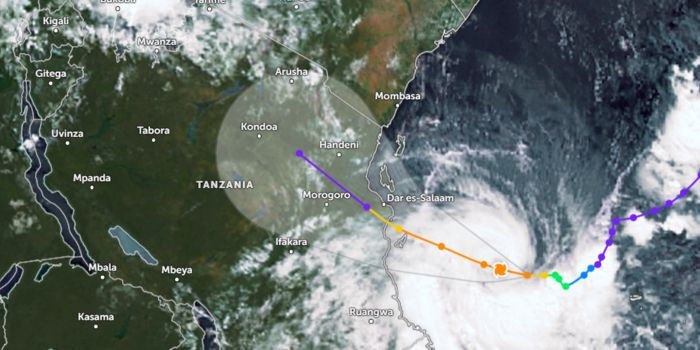The cabinet has issued a warning to Kenya in anticipation of the impending arrival of Cyclone Hidaya, poised to make landfall in Tanzania and Kenya within the next 36 hours.
While the cyclone's path indicates that Tanzania will bear the brunt of its force, concerns loom over the potential impact on certain parts of Kenya, particularly its southeastern region.
Satellite tracking provided by Zoom Earth forecasts Cyclone Hidaya's landfall between Saturday and Sunday, with wind speeds expected to soar up to 167 km/h upon impact. Additionally, a storm surge of 7.9 meters (2.3 feet) heightens the risk for coastal communities.
The approaching cyclone threatens heavy rainfall, towering waves, and fierce winds, potentially disrupting activities in the Indian Ocean.
Analysis suggests that regions closest to the Kenya-Tanzania border, notably the counties of Kwale, Taita Taveta, and Kajiado, face the highest vulnerability.
Towns expected to bear the brunt include Wundanyi, Msambweni, and Shimoni, alongside Lunga Lunga, Ukunda, Mwatate, and Duruma. Moreover, Taveta, Mariakani, Livundani, Marongo, Vanga, Maungu, and Rusanga are among the locations likely to feel the cyclone's impact.
The threat extends to vital wildlife habitats, including Tsavo West National Park, Diani Beach, Shimba Hills National Park, Lamu Wildlife Sanctuary, and Chyulu Hills National Park, all at risk of significant disruption and damage.
Despite some areas like Mombasa and Voi lying just beyond the cyclone's predicted path, they remain susceptible to heavy rains and strong winds as the cyclone's influence spreads.
This warning comes amid heavy rainfall across much of the country, with Cyclone Hidaya fitting the classification of tropical cyclones defined by the World Meteorological Organization.
Following Cabinet deliberations and meteorological warnings, residents in flood-prone areas across five coastal counties have been instructed to evacuate within 24 hours to safeguard lives and mitigate potential damage.
Currently positioned approximately 1,209 km north-northwest of Antananarivo, Madagascar, Cyclone Hidaya is expected to intensify before reaching eastern Africa, posing a significant threat to coastal communities in Tanzania and potentially parts of Kenya.
Experts attribute the rising frequency of cyclones in the region to intricate interactions between weather systems and global climate patterns. With the Intergovernmental Panel on Climate Change projecting increased risks of extreme weather events due to global warming, the imperative for adaptive strategies and disaster preparedness measures becomes ever more urgent.

